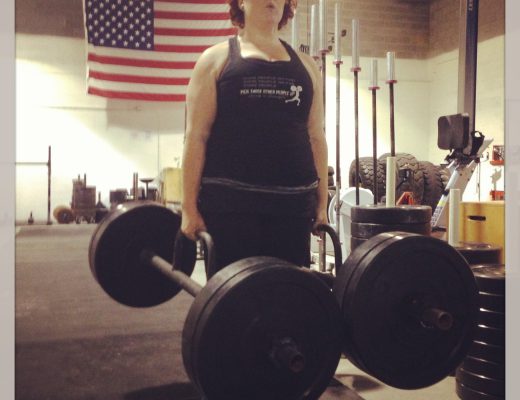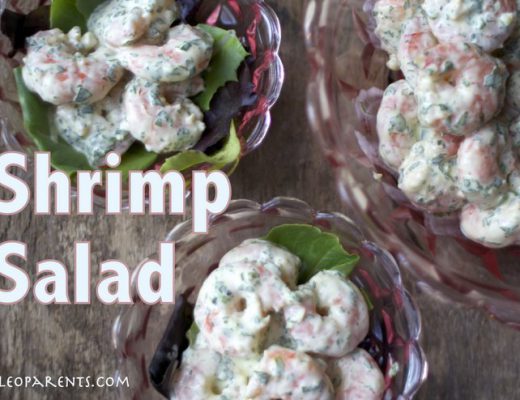
We’re back! After a long hiatus (thanks to the launch of Real Life Paleo), we’re back with another tutorial! Just in time for all of your holiday baking, we’ve got all the information you need on our secret ingredient. This magical, pure white substance is the perfect ingredient to any number of terrific dishes. This week we want to teach you about our very favorite cooking fat of all time. And best of all? It easy to make, cheaper than butter, dairy-free, nutrient-dense, delicious, and 100 percent paleo by any definition. What is this stuff?

Lard
Lard! The lynchpin of our second book Beyond Bacon and the secret ingredient in many of our most popular recipes! So divine, Stacy has made “Praise the Lard!” her signature quote (no seriously, we have t-shirts about lard)! We know quite a few of you are overwhelmed at the idea of rendering your own lard or don’t know where to start. Don’t worry, that’s what our tutorials are all about – we’ll show you how to do it and how to implement it in your cooking today!

Lard is perhaps the oldest cooking fat; it is found in every culture that cultivates pigs. And why not? It’s available in massive quantities every time a pig is slaughtered, it’s very versatile and it’s pretty darn tasty as well. But this most traditional of fats came under attack in the early 1900s from an unlikely source. Cotton.

Yep. Good old Crystalized Cottonseed Oil was introduced in 1911 into a marketplace that didn’t need it. With a plethora of satisfied homemade butter and lard makers. If you’re invading a marketplace with a, frankly, inferior product, you have to do a really hard sell. They made headway by claiming to be a better cooking substance. In the 50s hydrogenated oil was finally popularized, since claiming to be modern (during space age technology) was a big selling point.
But the real hammer blow that knocked lard out of popular consciousness was the saturated fat scare of 70s and 80s. Once we started demonizing saturated fats and animal fat in general, lard was immediately viewed as one of the most unhealthy foods. Fortunately, in recent times lard has made a resurgence as people rediscover its unique culinary traits and we now have books on lard and mainstream articles about its virtues. But it’s not not the health demon it was once believed to be!
Health Benefits
Believe it or not, but lard is a better health choice that most cooking fats and oils! In fact, our family came to be the Prince & Princess of Pork because Stacy was limited to the types of fats she could digest after having her gallbladder removed (read more about that here) and did very well with lard. Rather than being the pure saturated fat menace many would have you believe, 44% of lard is the much touted monounsaturated fatty acid oleic acid, the fat that makes olive oil so heart healthy. Not only that, but another 14% is stearic acid, which has been shown to lower cholesterol. And while we know that cholesterol is not the heart killer that it was once thought to be, you should know that lard is lower in cholesterol than butter. So why was lard pushed out while we continued to eat butter?
Most importantly, there is very little of the actual heart killer, trans fatty acids, in lard. In contrast, its vegetable shortening replacements are chock full of them.
Pastured vs. Not
Some will tell you about “toxins” stored in the fat of animals and that you should be concerned about consuming the fat of conventionally raised animals. While I don’t know if you should really be concerned about this, it is true that vitamins are certainly stored in fat. Specifically, the fat-soluble vitamins like Vitamin A, D, E and K. These are what you would expect to find in fat that you render yourself.
And pastured pork fat is one of the highest food sources of Vitamin D, the vitamin people are often very deficient in. The reason for that is simple: Vitamin D is made in mammals from sun exposure and pastured animals are always out in the sun.
Keep in mind that none of this is necessarily true about the fat blocks purchased in grocery store, as they have been rendered into pure fat with no other content whatsoever. Which is why we’re going to teach you how to do it yourself, we believe in you – you can do it! We know it seems inconvenient and time consuming to do yourself, but you can render your own from start to finish in under an hour and most of that is inactive time. Not to mention, making your own lard is super cheap, not just vaguely affordable. Since farmers end up with so much leftover fat when they process pigs for pork, huge amounts of pork fat can usually be found for under $5 – lasting us months! Plus, we’re big on supporting humane, sustainable farms and buying the “odd bits” is by far the most affordable way to do that (read more about that here)!
Varieties
There are two different types of fat that are rendered into lard. First, and most common is back fat. Back fat that is rendered into a lard that is awesome for sauteing and savory preparations. It has a “porky” flavor, reminiscent of a unsweetened bacon. This lard will make your roasted vegetables taste 1000% better and replace butter in your mashed veggies.
The other variety of lard is leaf lard, made from the fat inside the abdomen that protects the kidneys. Although it’s more “bumpy” before its rendered, it has a smoother texture as lard and more neutral flavor than back fat lard. It’s best used in baking and makes an amazing pie crust. Some people claim claim that leaf lard is more rich in nutrients than back fat, but in our research we cannot find any evidence of this being proven.
We discuss this further in Beyond Bacon, but it’s important to note that different breeds do have a distinction between their quantity of fat and flavor profile. Certain breeds are known for better quality and quantity of fats, of these Mangalitsa is the most famous. Coincidentally, it’s one of the most distinctive looking breeds with its wooly coat that makes it looks like a cross between a sheep and a pig.
![mangalitsa-7[2]](https://paleoparents.com/wp-content/uploads/2014/12/mangalitsa-72-740x554.jpg) photo credit: amusingplanet.com
photo credit: amusingplanet.com

Tools
For making lard, you’ll need a food processor (we recommend this one) or, preferably, a meat grinder (we use this one). You need to get the fat into as tiny pieces as possible. The smaller your fat pieces, the more fat you can extract. The grinder is perfect for this task.
Tips
Some people will tell you that you can do this in a crockpot, but we advise against this. Because there’s a fine line between perfect, white lard and burned, bitter lard, you don’t under any circumstance “set it and forget it.” I’ve burned large pots of fat with a crockpot and I don’t want you to do that too. Some people say that making lard is stinky, and it MUST be a crock-pot version that creates a burned aroma for them. Making lard this way is quick and relatively aroma-free, save for the hint of baconesque flavor wafting for the air… and if you’re complaining about that, no one can help you.
Be careful! If your lard ends up that brown color on top, it has been burned! The result will be bitter and not tasty! You want it creamy and white like the bottom. This is why our method involves a bit more effort, but a whole lot less time and will result in the stunningly snow white lard of everyone’s dreams.
I
How to Make Lard
 This is back fat. If it’s more in clumps, it’s likely to be leaf fat instead.
This is back fat. If it’s more in clumps, it’s likely to be leaf fat instead.
Know what you are making and label the jar afterwards!
1. First step in making lard is to get your fat. Usually it will come in sheets like this.
2. Grind your fat in your food processor or meat grinder. Grind the fat very small into a large heavy bottom pot.
3. Place the pot over medium-low heat uncovered. Simmer for up to 2 or 3 hours, depending on the amount of fat you are rendering.
4. Every 20 to 30 minutes, pour off the accumulating liquid fat through a strainer into your storage container, then stir your fat pieces and return to the heat. This ensures that you can’t burn your poured off fat! Your fat is done when your solid fat pieces have lightly browned, about the shade pictured below.
5. Pour off the remaining fat. Save the browned fat pieces as they are an excellent garnish. Crispy Lardons taste just like bacon, only without the salt and sugar. They make an excellent garnish to just about anything, even apple pie and salad!
 Yes, we included a 2nd gratuitous crispy lardon shot. We know what we’re talking about here.
Yes, we included a 2nd gratuitous crispy lardon shot. We know what we’re talking about here.
Storage
We store our lard in mason jars (we like these) for a couple of reasons. Pouring hot fat into plastic might melt the plastic or leech chemicals from the plastic into your lard. Glass will not do that. The screw top lids are also idea because they are tight enough to prevent spilling the hot fat. They’re also very good at keeping out medling cats who love to eat the stuff.
We put our lard in the fridge to cool and solidify. You can keep it there, of course, but rendered lard is extremely stable and can then be frozen or kept on the kitchen counter for a very long time (unless food bits get into it, so use a clean spoon)!
How to Use Lard
If you were to buy Beyond Bacon, you would find a ton of uses for lard. We use it to fry things, like the raved about Chicken Fingers and Yuca Fries in Real Life Paleo as well as these (not) Corn Dogs and Potato Chips from Beyond Bacon – but we also use it to roast vegetables, saute vegetables and brown meat, for cooking our eggs, and in our baking. Of particular note is our award winning The Best (lard) Brownies, our grain-free traditional Lard Pie Crust like grandma used to make, and the crazy good Rosemary Carrot Mash.
But an even more traditional use of lard is as a spread. Really! In French restaurants, you are often served both butter and lard for spreading on your bread. We recommend salting, whipping, and adding a touch of honey if you intend to serve it this way, but we assure you you’ll love it that way! Heck, we watched our friend Kimberly from What In The Health eat freshly rendered lard from Patowmack Farms off a spoon last Friday!
 Love butter? We dare you to try Lard!
Love butter? We dare you to try Lard!
All food photos by Aimee Buxton from Beyond Bacon











